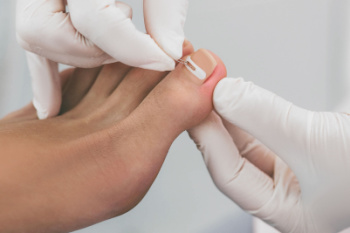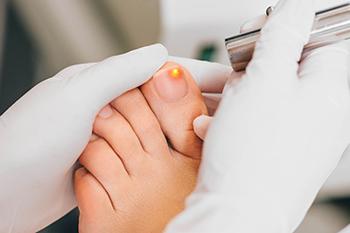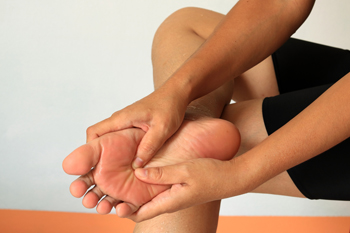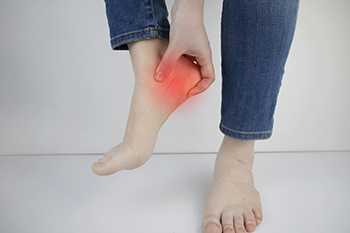
Foot problems are a common complication of diabetes, primarily stemming from a loss of protective sensation, or LOPS, and peripheral artery disease, or PAD. The loss of feeling in the feet results from nerve damage, which can make a patient unaware of injuries. Undetected blisters or sores increase the risk of infections and complications, and may lead to ulcers. Regular foot examinations by a podiatrist are essential for a diabetic experiencing either LOPS or PAD. Prevention strategies include wearing well-fitting shoes, checking for foreign objects in shoes, and being cautious of extreme temperatures. It is important to note that peripheral artery disease decreases blood flow to the feet, which results in pain, slow wound healing, and an elevated risk of foot ulcers and amputation. A podiatrist can assess blood flow to the feet to detect PAD early, which allows for prompt management. If you are diabetic and experience numbness and slow-healing wounds, it is suggested that you make regular visits to a podiatrist.
Diabetic foot care is important in preventing foot ailments such as ulcers. If you are suffering from diabetes or have any other concerns about your feet, contact one of our podiatrists from Greater Boston Foot Care, PLLC. Our doctors can provide the care you need to keep you pain-free and on your feet.
Diabetic Foot Care
Diabetes affects millions of people every year. The condition can damage blood vessels in many parts of the body, especially the feet. Because of this, taking care of your feet is essential if you have diabetes, and having a podiatrist help monitor your foot health is highly recommended.
The Importance of Caring for Your Feet
- Routinely inspect your feet for bruises or sores.
- Wear socks that fit your feet comfortably.
- Wear comfortable shoes that provide adequate support.
Patients with diabetes should have their doctor monitor their blood levels, as blood sugar levels play such a huge role in diabetic care. Monitoring these levels on a regular basis is highly advised.
It is always best to inform your healthcare professional of any concerns you may have regarding your feet, especially for diabetic patients. Early treatment and routine foot examinations are keys to maintaining proper health, especially because severe complications can arise if proper treatment is not applied.
If you have any questions please feel free to contact our office located in Plymouth, MA . We offer the newest diagnostic and treatment technologies for all your foot and ankle needs.









